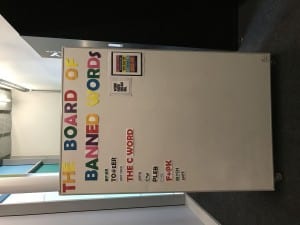In order to prepare our actors for extensive physical theatre, I have planned a series of exercises, many of which are influenced by Jerzy Grotowski, to train the body to develop and embrace intricate movements. Grotowski created the notion of ‘poor theatre’, and was “grounded in the belief that the personal and scenic technique of the actor is the core of theatre art” (Slowiak and Cuesta, 2007, 44), meaning practising exercises and techniques is of primary importance to performers. I have particularly focused on exercises which loosen the body, build balance and help the actors to find and use their ‘centre’ – the point where the actor’s physicality should emanate from; Grotowski believes that one must “eliminate the body’s resistances” (ibid, 93), and so the result of these exercises will particularly help Sam, the main actor for the ‘space scene’, with the difficult task of representing weightlessness and anti-gravity. Below are videos which show me being taught specific exercises fashioned to benefit the body in physical teatre, which I will then further prepare to target my specific aims. I am going to be continuing to lead these exercises throughout the rehearsal process, as consistency when practising these warm up exercises mean that over time the body will be trained to allow for more technicality in physicality, as aspects such as balance, flexibility and strength will be further developed.
The slowness of the spaceman’s choreography puts pressure on Sam’s balance, and so building this ability allows for more stable and fluid movements. Also, by finding and using his ‘centre’, Sam will develop a stronger core and hence gain more control on each movement; this will correspondingly help him give the appearance of weightlessness. In the video below, we can see the type of choreography that the spaceman does that will be developed from these exercises.
Slowiak, J. and Cuesta, J. (2007) Jerzy Grotowski. London, Routledge.

